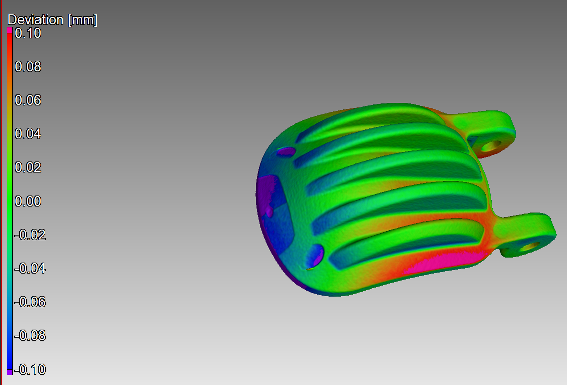By: Gary Johansson
June 28, 2020
Here at Matrix we manufacture complex plastic components used in medical devices and other critical applications. These parts can vary greatly in terms of size, material, and design - but they all share several characteristics that can make them difficult to inspect using traditional methods.
Performing First Article Inspections with these methods can be particularly time consuming and labor intensive. In addition to creating fixtures for each setup, the parts often need to be “sectioned” (sawed, cleaved, ground down) in order to inspect internal dimensions that are not naturally accessible via a touch probe or optical scope.
The associated tasks may require an inspector with a high skill level and/or experience performing similar procedures. They also open up additional steps where operator bias and other errors can be introduced. Were all cavities saw cut and treated the same? Do different inspectors reproduce the exact same setups?
Above that, the sectioning process itself is inherently flawed. Sawing a plastic part to access a cross-section will almost certainly introduce its own level of error, and this error can often exceed the tolerances of the dimension and distort inspection results. Warp, burrs, rolled edges, inaccurate trimming, inaccurate positioning of the section line and melting are all possible byproducts of manual sectioning methods.
And after all is said and done, you end up with first article data that is historically limited to the original points in your inspection layout. So if you want to go back later on and inspect any additional dimensions, the setup would have to be recreated with the original parts.
To sum it up, performing a First Article Inspection (FAI) on complex parts using traditional methods often involves the following concerns:
- Time consuming & labor intensive
- Require highly-skilled technicians
- May introduce operator bias
- Allows for subjectivity in results depending on operator
- Historical reference data is limited to inspection points taken from the original sample parts, making any future inspections from those samples very time consuming and possibly inaccurate
- Requires inherently flawed sectioning process which can introduce error that exceeds dimensional tolerances (warp, burrs, rolled edges, trim marks, melting)
This is where Computed Tomography (CT) scanning excels for automating FAIs:

- Parts can be quickly set up and scanned, creating hundreds of thousands of data points that comprise a "point cloud."
- The point cloud is then aligned with the CAD model and interrogated with Volume Graphics software.
- A fully 3-D generated "color-map" visually indicates how accurate (via each data point) your plastic or metal parts are to your CAD model.
- Special software also allows us to develop an inspection program, in conjunction with the CAD model, to generate a fully annotated inspection report per the piece part print.
In the end, our application of CT scanning technology reduces the amount of time and labor required for first article inspections, eliminates operator bias and human subjectivity from the process, minimizes the dimensional stresses caused by manual sectioning, and leaves you with easily retrievable, electronic historical data that can be interrogated repeatedly for any number of data points at any time in the future.
_horizontal_white_536x129.png)

